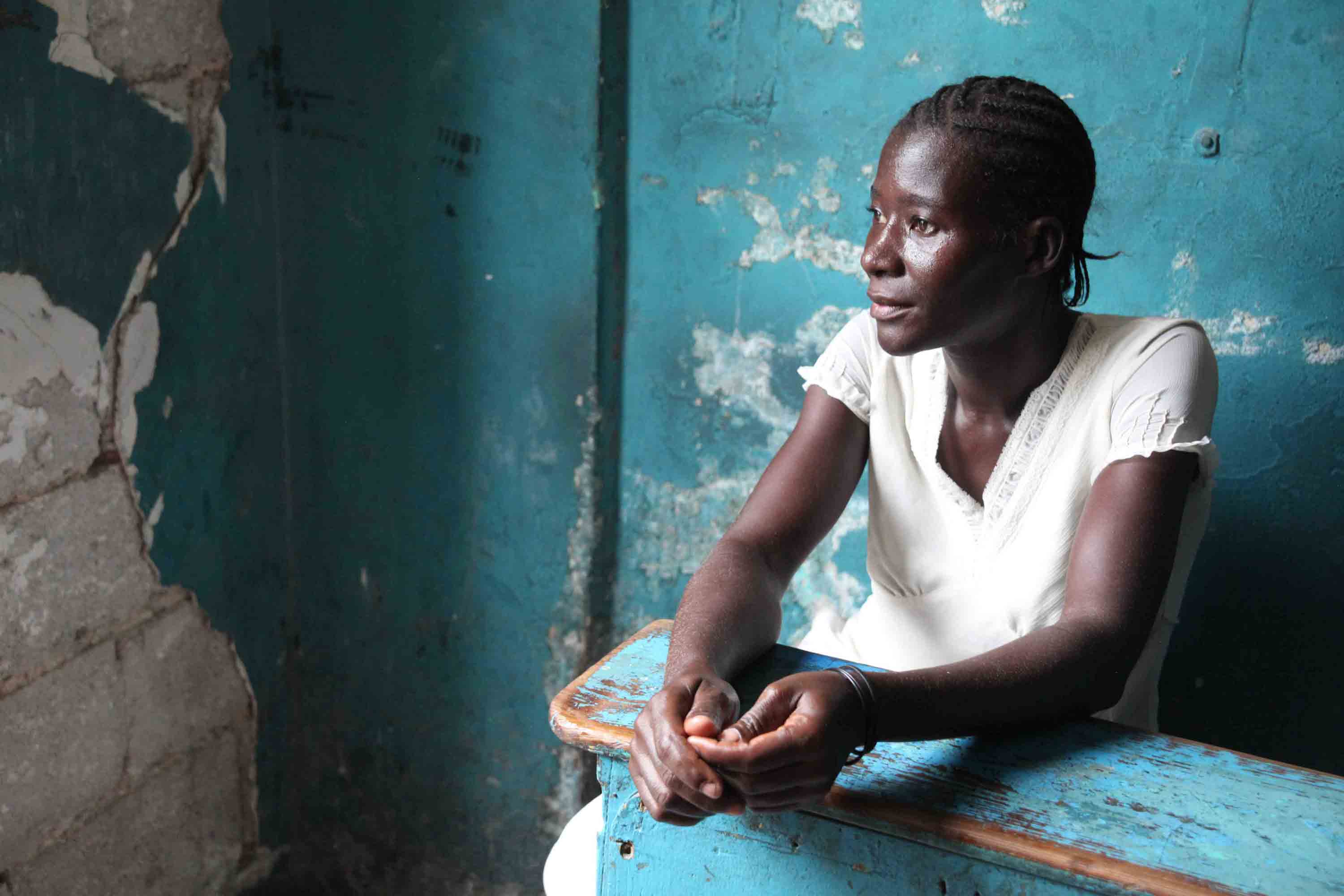At the very first question, Phara starts to cry. I simply ask about her parents, and she breaks down, pulling the long braids out of her face so that she can wipe the tears. They're the braids she hangs low across her forehead, to hide the small brown growths that cover the right side of her face.
Between sobs, she is able to tell me that her mother died when she was 2, and her father died when she was 8, both from AIDS. She has been alone in the world since then. The aunt who was supposed to care for her kicked her out five years ago, when she was 11, leaving her to live on the streets.
Phara sobs again for a good minute before she finally reveals the singular source of her despair: "It's the disease," she says. "I've been living with HIV since I was born."
Phara and her friends Malia and Edeline, also 16, have come to this community center in Jacmel to tell us how life has been since the earthquake. All three are AIDS orphans, and are HIV positive themselves. The day of the earthquake, the girls' homes were damaged, and so they and several other friends headed to the airport, where they slept on the tarmac, in the open air. They were forced to move when the airport reopened, and went to the Pinchinat tent city. But then men tore apart their flimsy shelter one night and raped all 12 of them. They moved to a tent in the front yard of a church, but the priest asked them to leave, so they stay away during the day and sneak back at night to sleep.
I've heard countless heartbreaking stories since we started working in Haiti in February, but none like this. When Malia, in talking about the rape at Pinchinat, takes off her glasses so that she can show me her glass eye—her left eye was knocked out during another violent rape two years earlier—I am speechless. I'm not sure what to say to her next. The stories of displacement, of death, of loss that I've heard before have been sad, but simple; this is layers upon layers of ineffable pain.
In the evening, the girls take us to the church yard where they live. It is across the street from the airport where they slept that first month after the earthquake. The inside of their tent is moldy, because of the water that soaks the floor each time it rains. A cloud of mosquitoes rises as we step into the tent; Malia explains that they like the combination of moisture and stifling heat.
Five girls sleep together on two small mattresses. Like typical teenagers, they have draped their clothes over every surface—pink tank tops, T-shirts, faded jeans, bras and towels hang from a wire along the top of the tent. But the girls are so much more serious than 16-year-olds should be, so worn, so fatigued by life, by disease, by the fact that they are homeless.
Phara explains why it is that she started crying when I asked about her parents—it's one thing that would make all these burdens just a little bit easier to bear. "If my mother was alive, I would still suffer from discrimination, but she had HIV like me, and I would have her love and support, so I would not suffer alone," she says. "But now I am taking everything on my shoulders."
Photos for this post shot by Andre Lambertson












